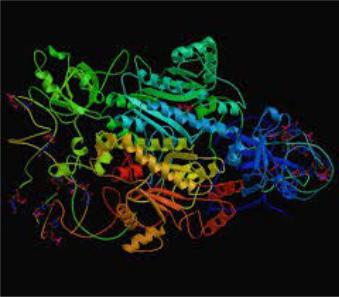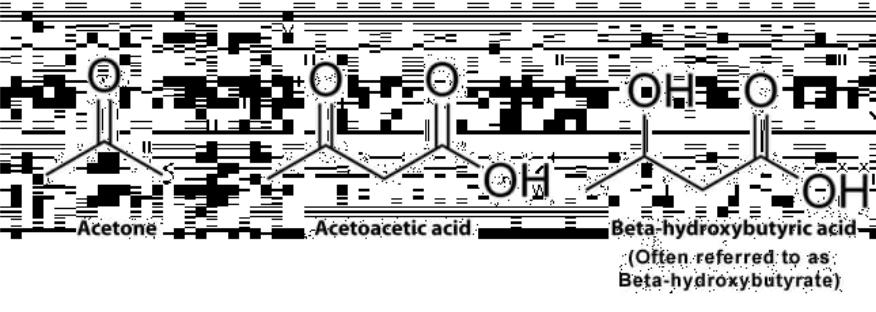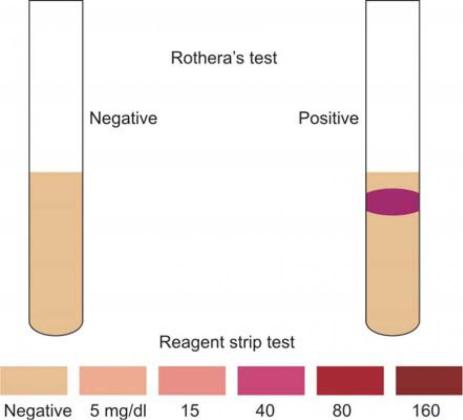
- •Liver
- •Liver and detoxification
- •The first way of intoxication
- •The second way of intoxication
- •Liver and carbohydrate metabolism
- •Liver and protein metabolism
- •Liver and fat metabolism
- •Liver and blood coagulation
- •Liver and hormone inactivation
- •Liver and Vitamins
- •Depot and excretory role of a liver
- •Reactive Oxygen Species (ROS)
- •Cellular Defense Against ROS
- •Thymol test
- •Quantitative determination of serum alkaline phosphatase (ALP) activity
- •Role of kidneys in water-salt metabolism
- •Regulation of sodium excretion. Renin
- •Regulation of sodium excretion. Renin
- •Antinatriuretic system
- •Natriuretic system
- •Urine
- •Physico-chemical properties of urine
- •Proteinuria
- •Functional proteinuria
- •Organic proteinuria
- •Prerenal proteinuria
- •Renal proteinuria
- •Postrenal proteinuria
- •False proteinuria
- •Qualitative determination of protein in urine
- •Glucosuria
- •Causes of Glycosuria
- •Extrainsular glucosuria
- •Hepatic and renal glucosuria
- •Primary and secondary glucosuria
- •Insular glucosuria
- •Clinical diagnostic value
- •Fructosuria
- •Ketonuria
- •Detection of ketone bodies in urine
- •Bilirubinuria
- •Qualitative detection of bile pigments in urine
- •Saliva
- •Chemical composition of saliva
- •Saliva proteins
- •Biological role of saliva
- •Mucins
- •Lysozyme
- •Saliva Whey Proteins
- •Ferrous enzymes
Clinical diagnostic value
Let’s write!
In normal urine, sugar is present in an amount of 0.2 g/L, which is lower than the resolution of conventional laboratory diagnostic methods. If sugar is detected in the urine by available laboratory methods, it is glucosuria. Distinguish glucosuria hyperglycemic and renal.

Fructosuria
•Reason: the basis is the insufficiency or decrease in the activity of the enzyme that breaks down fructose (fructose-1-phosphataldolase). As a result, fructose, accumulating in the body, has a toxic effect.
•Clinic: clinical symptoms appear when children start giving fruit juices. Lack of appetite, vomiting, cessation of growth, frequent fainting, and mental retardation develop. Without treatment, children die at 2-6 months of life.
•Diagnosis: fructose is detected in the urine, fructose is increased in the blood, glucose is decreased. Fructose loading causes a sharp deterioration.
Let’s write!

Ketonuria
Let’s write!
Ketone bodies (acetone, p-hydroxybutyric and acetoacetic acids) are determined by the doctor’s prescription in patients with diabetes mellitus, with thyrotoxicosis, with subarachnoid hemorrhages, with acetonemic vomiting in children, with toxic dyspepsia, dysentery, and prolonged starvation. If there is a smell of acetone in the urine, with glucosuria, the laboratory assistant must determine the ketone bodies without the appointment of a doctor.

Detection of ketone bodies in urine
Let’s write!
The principle is based on the ability of ketone bodies (acetone, acetoacetic, β-hydroxybutyric acid) to give color reactions with various reagents.
Ketone bodies are normally formed in the liver of healthy people from acetyl-CoA. They are delivered to the muscles by blood flow, where they undergo oxidation. Ketone bodies are not detected in the urine by conventional laboratory diagnostic methods, since their excretion in healthy people does not exceed 2050 mg / day. A sharp increase in ketone bodies in the urine (ketonuria) is typical for diabetes mellitus, since ketogenesis is activated and ketonemia develops.
